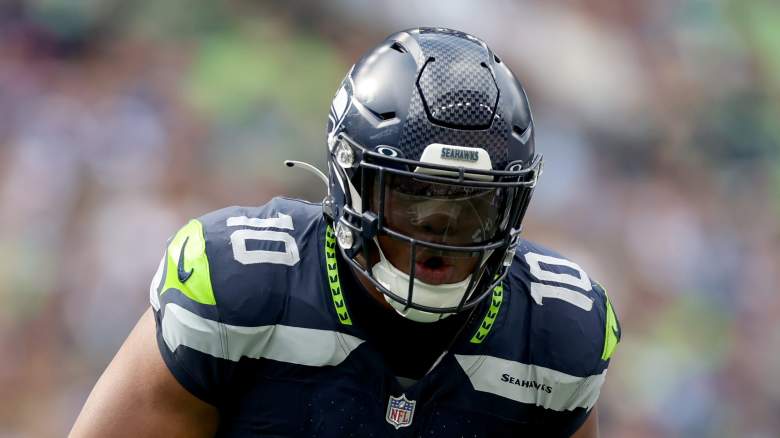Whether you're new to basketball, enjoy casual pickup games, or have been playing the sport for years, the right pair of basketball shoes is essential — and not just for style. "Picking the right basketball shoes is super important for performance and injury prevention," says professional basketball coach and scout Moses Jean-Pierre, the co-founder and executive director of the nonprofit Hoops for Haiti. From providing ankle support with high collars to absorbing impact with cushioned insoles, the right pair can make all the difference on the court, Jean-Pierre explains to PS.
To help you find the perfect pair of basketball shoes, we also turned to women's sports networking platform LaunchBreak to seek out the expert advice of four pro and collegiate basketball players who know first hand what to look for in a basketball shoe. Ahead, find their best tips on basketball shoes gained through years of experience on the court, plus, shop all their favorite pairs.
How to Choose the Best Basketball Shoes
There's no one-size-fits-all basketball shoe — your ideal pair depends on your role on the court and your personal preferences, which may evolve over time. However, our experts agree there are six key factors to consider when shopping for basketball shoes to ensure peak performance: weight, support, fit, traction, cushioning, and style.
Weight: You might assume lightweight shoes are a better choice but it depends how you play. "If you are a quicker player you might want a lighter shoe, but if you're someone who plays at a slower pace and needs to be balanced, a heavier shoe like a Lebron could work," mentions WNBA player Kaitlyn Davis, a New York Liberty forward and the team's 2024 WNBA third round draft pick. Shoes with lots of structural reinforcements and thicker midsoles tend to be heavier while those made with mesh and knit tend to be lighter.
Support: Basketball shoes are designed to offer ankle support and lateral stability, typically influenced by the shoe's height (low, mid, or high top). The type of support you need will depend on your playing style, Jean-Pierre says. "Ankle high-tops are good if you need strong support for your style of play, like most centers and power forwards do. They give good side-to-side support, and sometimes they even help you jump higher," he explains. "If you play guard and all you want is the fastest and best shoes for getting away from defenders, then you probably wear low-top shoes — actually, you should be wearing low-tops. Many of the best guards in the NBA wear low-tops." For a balance of both mobility and support, opt for mid-tops, as they offer moderate ankle support but don't sacrifice too much agility.
Fit: Getting a pair of basketball shoes that fit well goes beyond matching your shoe size. "Shoes should feel like an extension of your foot when you're playing," Jean-Pierre says. "And make sure your toes have room in the shoes to decrease the risk of blisters," says Denise Solis, who played college basketball for Temple University. Don't be afraid to size up or down from your normal size because a well-fitted basketball shoe ensures not only comfort but also stability on the court.
Traction: Since basketball involves quick cuts and sudden directional changes, most basketball shoes by default are designed with traction in mind. However, you still want to pay attention to the tread pattern. Look for a multi-directional tread pattern that supports both lateral and vertical movements. Even if you don't think you'll be moving very fast on the court, a shoe with good traction can still help prevent you from sliding or losing balance. Also consider the hardness of tread, as softer treads tend to have better grip but wear down faster, while harder treads are less grippy but more durable.
Cushioning: Cushioning in a basketball shoe isn't just there to make your feet comfy or prevent them soreness after a long game, it also plays a role in shock absorption. "You do a lot of jumping and running, so you better have a shoe that cushions you when you land," Jean-Pierre tells us. "Landing is the most important part of jumping." Look for shoes with cushioning in high impact areas like the heel and forefoot so that it helps absorb the shock when you land, reducing the impact on your knees, ankles, and lower back. You may be tempted to reach for shoes with the thickest cushioning, but while comfortable, overly thick cushioning can actually compromise mobility, making it harder to be quick on your feet.
Style: Basketball player Mikayla Rowan, a former collegiate athlete at University of Southern Indiana, encourages finding a balance between style and function when choosing basketball shoes. "It's all good to have a set of criteria that you would like in purchasing a shoe, but definitely be okay with expanding your horizons. And get the sickest colorway that you can because it definitely makes you play better," she says. However style should never overshadow performance. Don't get a shoe just because it's trending, advises Lucy Chinelo, a professional basketball player in France and a former D1 athlete. "But go with something that gives you confidence to play without worries."
Ahead, you'll find the top 8 recommendations for basketball shoes from coaches and players. Several of the shoes come in men's sizes, so if you're trying to figure out how to shop, just add 1.5 to your women's shoes size and you'll get your size in men's.
 3 hours ago
3
3 hours ago
3
:quality(85):upscale()/2020/05/15/022/n/1922153/bfd24cb35ebf2678530944.12520606_.jpg)
:quality(85):upscale()/2024/12/10/041/n/49352476/d8aac1326758d5c8a18246.76542213_.jpg)
:quality(85):upscale()/2024/12/11/880/n/49351082/13757f136759f11b82c634.61732239_.jpg)
:quality(85):upscale()/2023/11/28/870/n/1922441/2bc962e56566452dd3c393.09584831_.jpg)
:quality(85):upscale()/2024/12/11/838/n/49351761/723337b26759e30eafacd4.77047030_.jpg)
:quality(85):upscale()/2024/12/11/807/n/1922153/08765e8f6759d85004da33.69415997_.jpg)
:quality(85):upscale()/2022/01/04/846/n/1922153/c6276fd161d49db6c703e2.72296946_.png)
:quality(85):upscale()/2024/12/10/030/n/1922153/48b1535b6758d25e5b34e9.35248089_.png)
:quality(85):upscale()/2024/08/08/826/n/1922794/1962f27566b51351492196.58080410_.png)

:quality(85):upscale()/2024/12/10/036/n/1922564/c299e12e6758d4227a4376.85318796_.jpg)
:quality(85):upscale()/2024/07/09/742/n/1922794/14c3597a668d6a157cf432.33544307_.webp)








 English (US) ·
English (US) ·